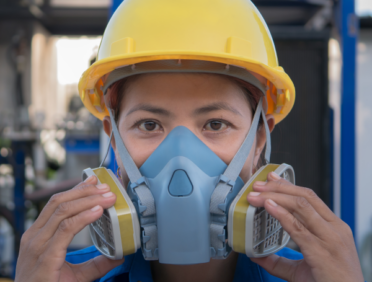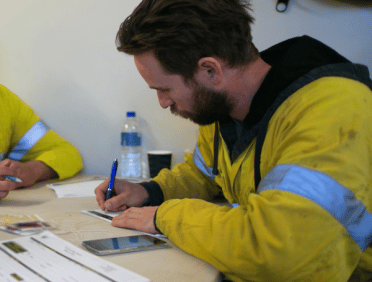No matter the type of business you work in, there is always a good chance you will have things you need to lift and carry. For the most part, these will be smaller items that are easier to move without injury, but sometimes you may find that you need to carry larger and heavier items that could cause an injury or an issue.
If there is a chance that you are going to need to handle anything, be that big or small, then you want to make sure that you have manual handling processes and procedures in place. But what is meant by manual handling, and why is it something that needs to be seen in almost all workplaces?
What is manual handling?
In its simplest form, the term manual handling means transporting or supporting a load by either your hand or your body force. You could be lifting that load, putting it down, pushing it, pulling it, carrying it or even moving loads.
You may think that it is only relevant to roles that require some physical work to be completed, such as those who work in a factory or in a manufacturing-type role. However, this is not the case, and in most roles that you may work in, there is a good chance that you will need to do some form of manual handling at some point.
Manual handling legislation
In order to protect employees and ensure that they are at the lowest risk of injury, the Manual Handling Operations Regulations (1992) was created.
This legislation outlines the main duties for both employers and employees and has an order of controls that are contained within the regulation, which need to be followed in order to keep everyone safe.
It covers not only the principles of safe moving and handling of things in the workplace but also an assessment of this process and also how to identify any risks that you may have in your workplace.
The basic principles of safe moving and handling
When it comes to moving or handling anything in your workplace, there are five basic principles that you should follow. They help to ensure that whatever it is that you are moving or lifting is done in a safe way and that you are going to have the lowest chance of injuring yourself or anyone around you.
Of course, every load is likely to be different, which means that you always need to think about it before you begin. The good news is that the more that you follow these “five p’s”, then the more you will get used to them. They may even become second nature when it comes to lifting anything in your workplace.
The first is to always plan what you are lifting. This is an incredibly important step but one that we always seem to skip over. Before you even lift up or push your object, you should always plan out the entire path that you are going to take. You need to make sure that the path is not only clear but that it is also clear at your end location too.
Another part of planning is to know what it is that you are lifting and how many people it is going to take. It is usually suggested that you should avoid lifting anything over 25kgs on your own, so if you know how heavy it is, then get someone in to help.
Of course, you may not know how heavy the thing you are lifting is, but you can try and guess by nudging it with your foot. If it is easy to move, then you can lift it safely; if not, then always get help.
Next, we have position, which is incredibly important to get right. You want to make sure that you always approach the load evenly with your feet around shoulder width apart. The centre of your body should be as close as possible to the centre of the object before you lower yourself to lift it.
Third is to pick up; as you move the object upward, you want to maintain as natural a motion as possible with the load nice and close to your spine. You should always aim to engage your muscles within your torso, which will stabilise your spine, as well as try and breathe nice and steady. Your legs should be doing most of the lifting work, not your back.
Once you have the object, you need to carefully proceed to where you need to move it. Keep your spine upright and try and avoid twisting as much as you can. You should also consider limiting your bending and reaching too. If you do find that you need to twist, then don’t do this at the waist; step with one foot in the direction that you need to go in. The rest of your body will follow.
If you are worried that you won’t be able to see over whatever it is that you are carrying, then have someone there to help you spot where you are walking and whether you are about to come across any obstacles.
The final stage is to place your object down where it needs to be. You should always lower an object in the reverse of how you lifted it. You should never drop a heavy load, you should not shove it into place, and you should not jerk it around. The best way to place something down is smooth, steady and deliberate; this will protect you from strains and any injuries. It may take longer to be careful and considerate, but it will really be worth it.
If you cannot avoid lifting something in the workplace, then you need to carry out a manual handling assessment. This will help you to assess the different parts of lifting the load and decide on how best to control it.
During an assessment, you need to look at who is lifting, what they are lifting and where they are lifting. You can remember this with the TILE acronym.
Tile stands for:
Task- look at what you need to do; consider whether it needs you to twist, stoop, bend, travel, push, pull, or there are going to be any sudden movements.
Individual- you need to think about individuals and how they can physically handle the load that needs to be carried. If the person has a known injury or any other reason why they may find the lift tricky, then this should be taken into account.
Load- you need to look at what is being lifted. Is it heavy? Is it difficult to hold, it is sharp? Perhaps it is hot or cold. You may even want to check if the load will move when you lift it.
Environment- you also need to consider the environment that you are lifting in. This can increase or impact the risk that is related to the task. You want to look at the floor conditions, the variations on many levels, as well as the space constraints that you may have. You also want to look at things such as poor lighting and the temperature of the environment too.
Conducting all these checks is what is going to ensure that you control the chance of injury to your staff and that they are able to safely lift any items that need to be lifted in your workplace.
One of the biggest parts of manual handling is how you actually approach what you are lifting and the posture as you lift it.
You should always lift with your feet apart, as this will give you a balanced base that will ensure you are stable as you lift. Your leading leg should be pointing in whatever direction you are going to go, and you should feel okay to move your feet during the lift you feel that you need to in order to be steady.
The footwear that you wear is also going to play an important part in the safety of your lift. If you are wearing high heels or flip-flops, then this may not give you the best base, and you want to avoid lifting and moving anything too heavy if you are wearing tight clothes.
When you are lifting, you need to ensure that you bend your knees and that your back is straight, keeping its natural curve. If you do need to bend at all, this should always be within the hips and knees with minimal curving of the back as this will help you to protect the spine, and you should also try to avoid squatting down too low with a heavy load.
You should avoid any form of twisting when you lift, especially at a time when your back is bent, and your shoulders should be level and facing the same direction as your hips at all times.
Your arms should always be within the boundary of your legs, and you want to aim for a hook grip with your fingers rather than trying to keep them straight.
As you carry the load, you need to bring it as close to your body as you can; this will make you stronger and keep the lift as solid as possible. The heaviest side (if there is one) should be the side that is closest to you when you lift.
You need to always keep your chin up and try to look ahead as you move your load, rather than looking down as you walk, which can cause a problem and be a trip hazard.
Manual handling is something that everyone is likely to have to do in their working life, but what you may not realise about manual handling is that it comes with a risk. Even if the load that you have to move is not too heavy, the process of lifting and carrying it could mean that it is likely to cause you an injury.
Of course, the load itself and the impact that it has on your body has to be the biggest risk, but there are lots of other risks that could occur with manual handling. You could trip over other things whilst you are carrying the load, usually because you have limited visibility of what is around you.
You may also drop the load and hurt someone else around you. Another risk of manual handling is that there is always a chance that you could damage property, other items or even the item that you are carrying, usually by dropping it.
You may not think that accidents at work due to poor manual handling are common. However, it is thought after a study by Unison that as many as one in three accidents are caused by manual handling, and over 300,000 people in the UK every year have some form of back pain as a result of insufficient manual handling and accidents caused by this.
The risks that can be associated with improper manual handling could impact the person in either the long-term or the short-term, and they can vary in just how severe they are. It is always advised that if you are someone who has handled anything at work or who does so regularly, then any aches and pains that you may have a need to be checked out.
Not only can this pick up on any injuries that you may not realise that you have, but it can also highlight the fact that you may not be properly handling the loads that you need to handle at work.
Some of the most common injuries that can occur due to improper manual handling include:
Broken bones
Sprains
Strains
Cuts
Bruises
Joint pain
Muscle pain
Pain in arms and legs
Inflammation
OOS (or occupational overuse syndrome)
Whilst you may be able to recover from these injuries, you may also find that you have long-term issues that cause you pain and discomfort and have an impact on your everyday life.
What are the employer’s duties?
Every employer has a legal obligation to ensure that their staff are protected from any potential injuries or accidents caused by manual handling. The most common way that they can try to do this is by providing training that teaches them how to handle any items at work properly and ensure that all tasks that they carry out are done so safely.
Whilst this training is relevant in all industries and business types, it becomes even more important if your employees are much more likely to handle items (especially those that are bulky, awkward to carry or that are heavy).
What are the employee’s duties?
Of course, it goes without saying that employers have to ensure that manual handling procedure is followed in any workplace, but it is also down to the employees to make sure that they are following what is expected of them too.
An employee should:
Follow safe working systems
Make sure that they use the equipment that has been provided for their safety and does some in a proper way
Ensure that they co-operate with their employer on any health and safety matters or policies that have been set out
Inform their employer should they identify any hazardous activities or risks within the workplace
Do not perform any activities that would put them or anyone else around them at risk
If an employee can do all of these things, then they are going to give themselves the best chance of being protected and also ensure that everyone around them is as protected as possible too.
To download a .pdf of this blog, please click here












